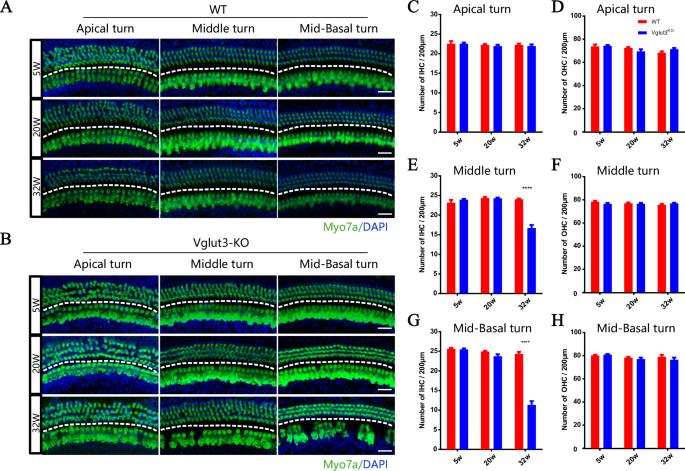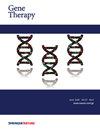Gene therapy restores auditory function and rescues damaged inner hair cells in an aged Vglut3 knockout mouse model
IF 4.5
3区 医学
Q1 BIOCHEMISTRY & MOLECULAR BIOLOGY
引用次数: 0
Abstract
Vesicular glutamate transporter 3 (VGLUT3) is prominently expressed in the inner hair cells of the cochlea, playing a vital role in auditory signal transmission to the brain. Previous studies have shown that Vglut3 gene knockout in mice causes severe sensorineural hearing loss without affecting hair cell integrity. However, the cochlear structure of the aged Vglut3KO remains inadequately explored. In this study, we analyzed the cochlear structure of aged Vglut3KO mice, revealing significant degeneration of inner hair cells, synapses, and stereocilia. To explore the potential of gene therapy to restore cochlear structure, we employed AAV8 vectors to express Vglut3 in the cochleae of 5-week-old Vglut3KO mice. Twenty-seven weeks post-injection, we conducted a series of experiments to evaluate the efficacy of our gene therapy approach. Auditory brainstem response (ABR) testing demonstrated restoration of auditory function following gene therapy. Immunohistochemical staining and scanning electron microscopy (SEM) analysis revealed substantial recovery of inner hair cells and stereocilia post-injection. Our findings provide important insights into the development of novel therapeutic strategies for age-related hearing loss.

在Vglut3基因敲除小鼠模型中,基因治疗可恢复听觉功能并挽救受损的内毛细胞。
水疱谷氨酸转运蛋白3 (vesular glutamate transporter 3, VGLUT3)在耳蜗内毛细胞中显著表达,在听觉信号向大脑传递中起着至关重要的作用。先前的研究表明,敲除小鼠的Vglut3基因会导致严重的感音神经性听力损失,但不会影响毛细胞的完整性。然而,老年Vglut3KO的耳蜗结构仍未得到充分探讨。在这项研究中,我们分析了老年Vglut3KO小鼠的耳蜗结构,发现内毛细胞、突触和立体纤毛明显变性。为了探索基因治疗修复耳蜗结构的潜力,我们利用AAV8载体在5周龄Vglut3KO小鼠耳蜗中表达Vglut3。注射后27周,我们进行了一系列实验来评估我们的基因治疗方法的疗效。听觉脑干反应(ABR)测试显示基因治疗后听觉功能恢复。免疫组织化学染色和扫描电镜(SEM)分析显示注射后内毛细胞和立体纤毛大量恢复。我们的研究结果为开发与年龄相关的听力损失的新治疗策略提供了重要的见解。
本文章由计算机程序翻译,如有差异,请以英文原文为准。
求助全文
约1分钟内获得全文
求助全文
来源期刊

Gene Therapy
医学-生化与分子生物学
CiteScore
9.70
自引率
2.00%
发文量
67
审稿时长
4-8 weeks
期刊介绍:
Gene Therapy covers both the research and clinical applications of novel therapeutic techniques based on a genetic component. Over the last few decades, significant advances in technologies ranging from identifying novel genetic targets that cause disease through to clinical studies, which show therapeutic benefit, have elevated this multidisciplinary field to the forefront of modern medicine.
 求助内容:
求助内容: 应助结果提醒方式:
应助结果提醒方式:


